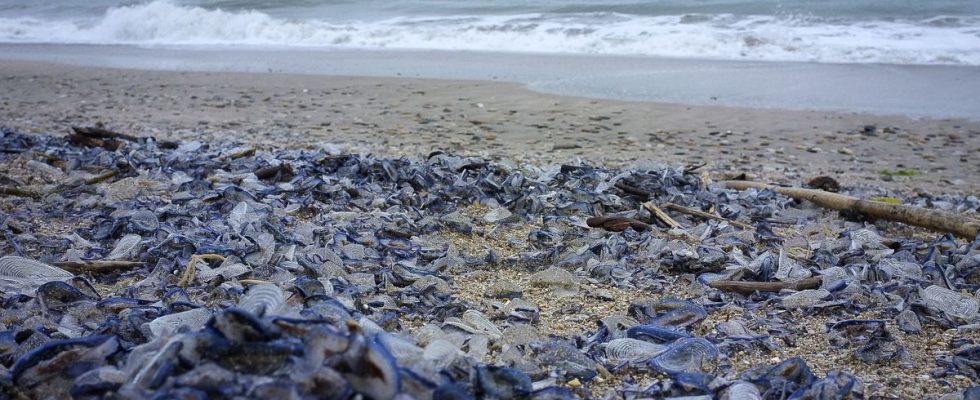This blue dream. For the past few days, the beaches of northern Finistère have gradually seen their sand change color, turning blue in places. So no, don’t see the work of an obscure Breton artist in need of recognition. It is in fact a natural phenomenon, “rare but not exceptional”, declared to West France Claudine Robichon, member of the association that manages the Museum of shells and marine animals from Plounéour-Brignogan-Plages.
A species of cnidarian that does not sting for humans
We no longer count the little blue spots that dot the beaches of the Pagan Country, they are so numerous. Hundreds, thousands of these stranded marine organisms that specialists quickly identified as velelles. If, to the eye, they can be confused with jellyfish, it is not so. There velella velella is certainly a species of cnidarians, in the same way as corals, jellyfish, gorgonians or anemones, but it is closer to organisms such as zooplankton. According to the literature on this subject, the tentacles of the velelles are not stinging for the human being.
It is quite common to see them run aground on the coast, on the Atlantic side, but also in the Mediterranean. It is the number observed in recent days that is quite rare underlines Claudine Robichon, specifying to West France that she had already seen “two other massive strandings in fifteen years”.
This phenomenon is explained by the fact that the velelles, rather accustomed to tropical seas, drift in the open sea, according to the wind and the currents. “It depends on the wind regime, confirms at France 3 a specialist. If you have a slab of velelles that’s ten hectares offshore, the winds are westerly for several days, that whole bunch will end up on the coast. »

